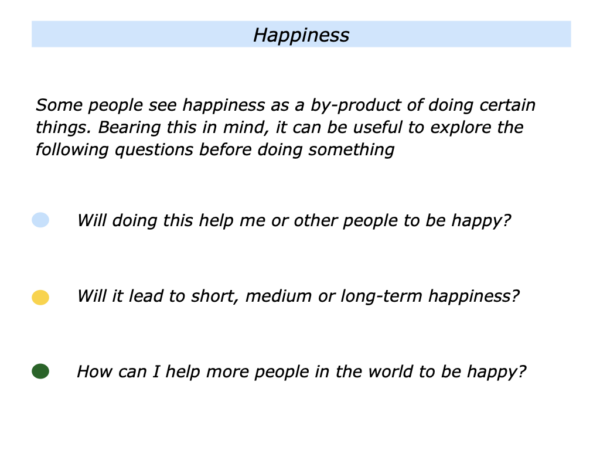
Most people want to be happy. They want to feel good and also, when appropriate, help others to feel good. There are many views on what constitutes happiness. These include the following:
Enjoyment … Pleasure … Eudaimonia … Contentment … Fulfilment … A Sense Of Peace.
There are also many views on how people may find happiness. This include the following. People can aim:
To be true to themselves … To be grateful … To have a positive attitude … To focus on what they can control … To do things that give positive energy … To help other people … To do their best in life.
To focus on a purpose … To follow their principles … To flow, focus and find fulfilment … To make use of their talents … To make a positive contribution … To achieve their picture of success.
Some people see happiness as a by-product of doing certain things. Bearing this in mind, it can be useful to ask the following questions before doing something.
Will doing this help me or other people to be happy? Will it lead to short, medium or long-term happiness? How can I help more people in the world to be happy?
There have been many books written about how to find happiness. These range from older spiritual texts to more recent approaches. Many of these describe similar principles.
The following section describes some of the more recent books. You will, of course, follow your own approach to helping yourself and other people to be happy.
Martin Seligman – Authentic Happiness
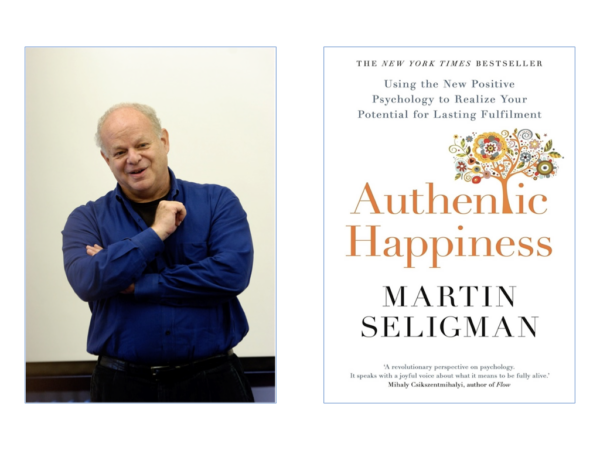
Martin has written several best-selling books. These include Learned Optimism, Authentic Happiness and Flourish. His work led to creating the Positive Psychology Center at The University of Pennsylvania. The Center says:
Positive Psychology is the scientific study of the strengths and virtues that enable individuals and communities to thrive.
Marty says he spent the first part of his psychological career studying misery. Moving on from treating ‘learned helplessness’, he studied people who were optimistic. What did they do right to live fulfilling lives?
He passed over a threshold after being elected president of the American Psychological Association. Marty was asked to pick the themes he wanted to work on during his Presidency. After a period of reflection, he chose to focus on positive psychology.
In his book Authentic Happiness, he described three kinds of lives that people could lead. Here is a brief overview.
The Pleasant Life
This is the ‘life or enjoyment’. It is one where people get positive feelings from pursuing their interests and other pleasurable experiences.
The Good Life
This is the ‘life of engagement’ or absorption. It is one where people immerse themselves in certain activities and experience a sense of flow.
This happens when there is a positive match between a person’s strengths and the task they are doing.
The Meaningful Life
This is the ‘life of affiliation’. It is one where people experience a sense of purpose by using their higher strengths to serve or be part of something greater than themselves.
Looking at it empirically, say Marty, the fulfilling life seems to be: The Meaningful Life + The Good Life + some aspects The Pleasant Life. In that order.
Marty has always maintained that there is more to life than happiness. This led to him producing his book Flourish. Here is an excerpt from a summary about the book.
Flourish builds on Dr. Seligman’s game-changing work on optimism, motivation, and character to show how to get the most out of life, unveiling an electrifying new theory of what makes a good life – for individuals, for communities, and for nations.
While certainly a part of well-being, happiness alone doesn’t give life meaning. Seligman now asks, What is it that enables you to cultivate your talents, to build deep, lasting relationships with others, to feel pleasure, and to contribute meaningfully to the world?
In a word, what is it that allows you to flourish? This involves focusing on the PERMA Model.
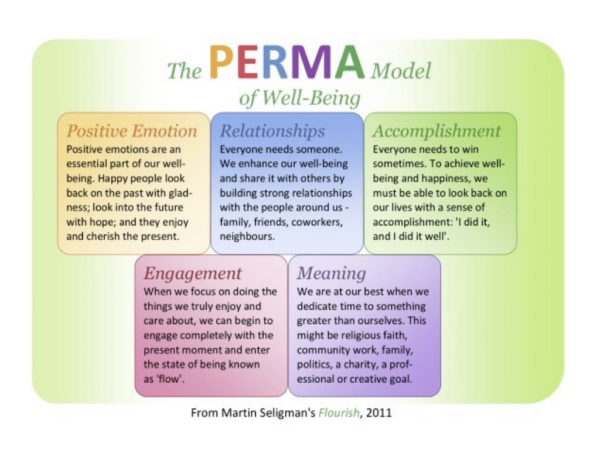
Tal Ben-Shahar – His
Work On Happiness
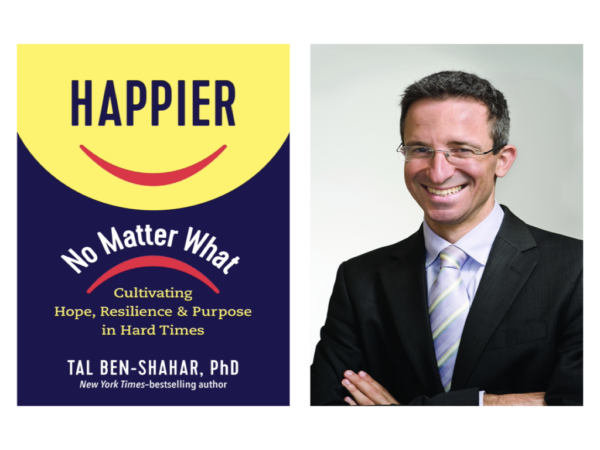
Tal Ben-Shahar loves teaching and his Harvard University course on How To Be Happy attracted over 800 students. Why teach such a course? Tal recalled his own days as a student.
Even though he was an outstanding achiever, something was missing. So later he created the kind of course he was looking for as a student. This aimed:
To provide an introduction to the research in the field of happiness;
To provide practical ways the students can apply these ideas in their lives and communities.
The course was based on research from positive psychology. This is the study of humanity at its best and the conditions that enable people to flourish.
So how can people be happier? Tal says some of the messages can sound corny but the secret is in actually translating these into action. It is for people to do these things rather than just think about doing them. Here are some of the messages.
Accept painful emotions
These are part of being alive. The only people who don’t feel pain are psychopaths and those who are dead.
Spend time with people you care about
This quality time is enjoyable and also gives us energy to do other things.
Enjoy time affluence
Appreciate life and the specific thing you are doing. Enjoy the moments, rather than try to do several things at once.
Simplify your life
This makes it easier to appreciate life. At the moment we are trying to cram more and more into our days.
Exercise
This is equivalent to some of the most powerful drugs that deal with depression or anxiety.
Breathe
Learning to breathe deeply and properly can improve our sense of well-being.
Cultivate gratitude
Research shows that people who keep a Gratitude Journal are more positive. This involves spending a few minutes each night writing down five things for which they are grateful. Such a simple exercise increases their optimism and even their health.
Sonja Lyubomirsky – The How Of Happiness
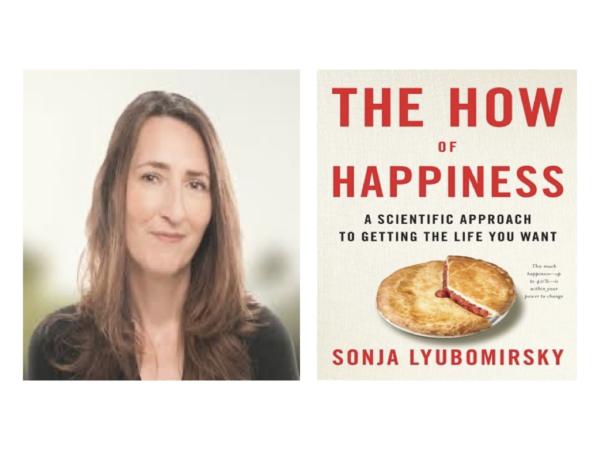
Sonja made a scientific study of people who were happy. This led to her producing the book of practical ideas called The How Of Happiness: A New Approach To Getting The Life You Want.
Below is a summary of Sonja’s findings. These are in line with many of the finding from other researchers.
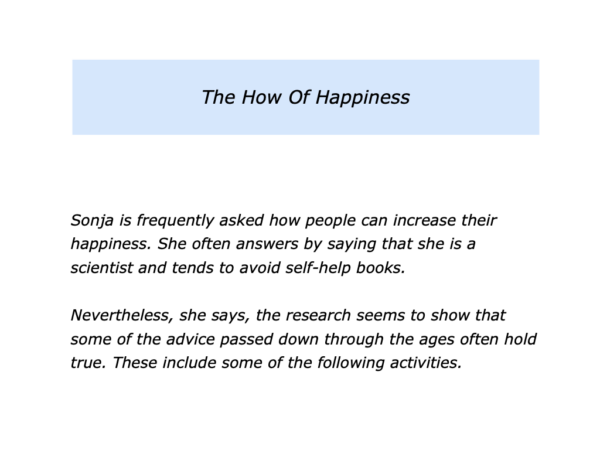
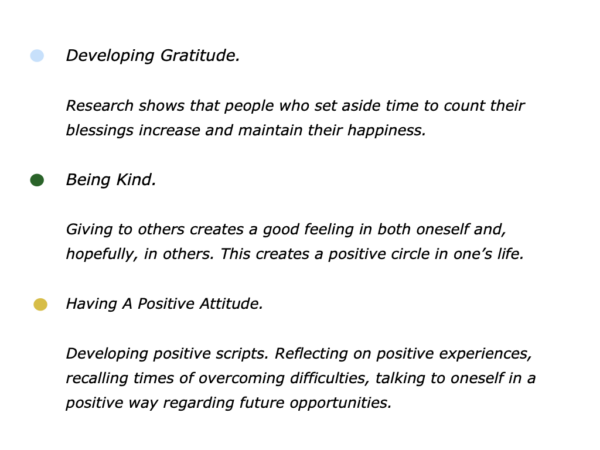
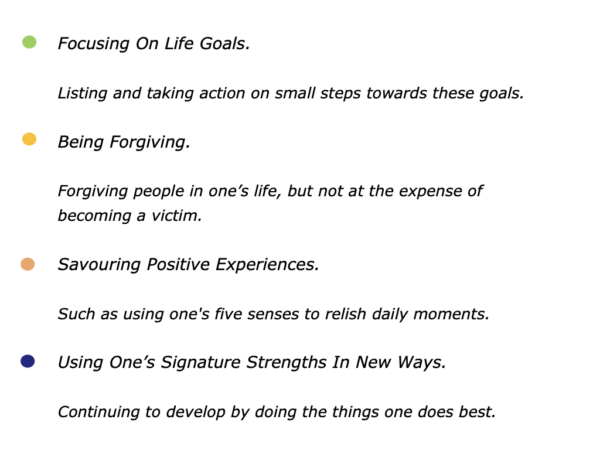
Most people want to be happy. As we have seen, there are several common principles they can follow to increase the chances of experiencing this feeling. Some take the following steps.
They have a positive attitude. They have a sense of gratitude, focus on what they can control and aim to do their best in life.
They build positive relationships. They are generous, encourage people and want to help them to grow.
They make a positive contribution. They serve something greater themselves, follow their principles and aim to help people or the planet.
Let’s return to your own life and work. Imagine that you want to follow elements the happiness approach. How can you to this in your own way?
If you wish, try tackling the exercise on this theme. This invites you to complete the following sentences.
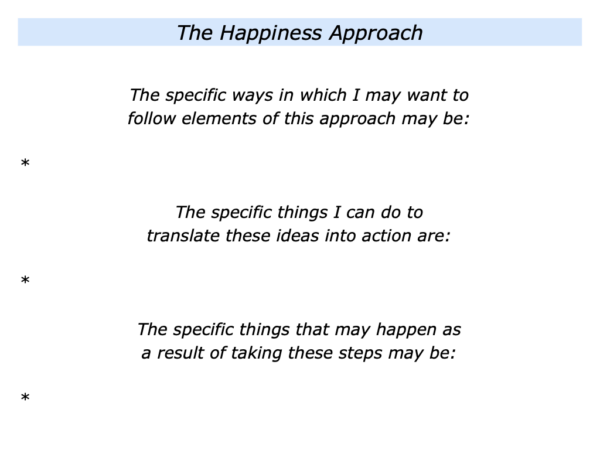


Leave a Reply